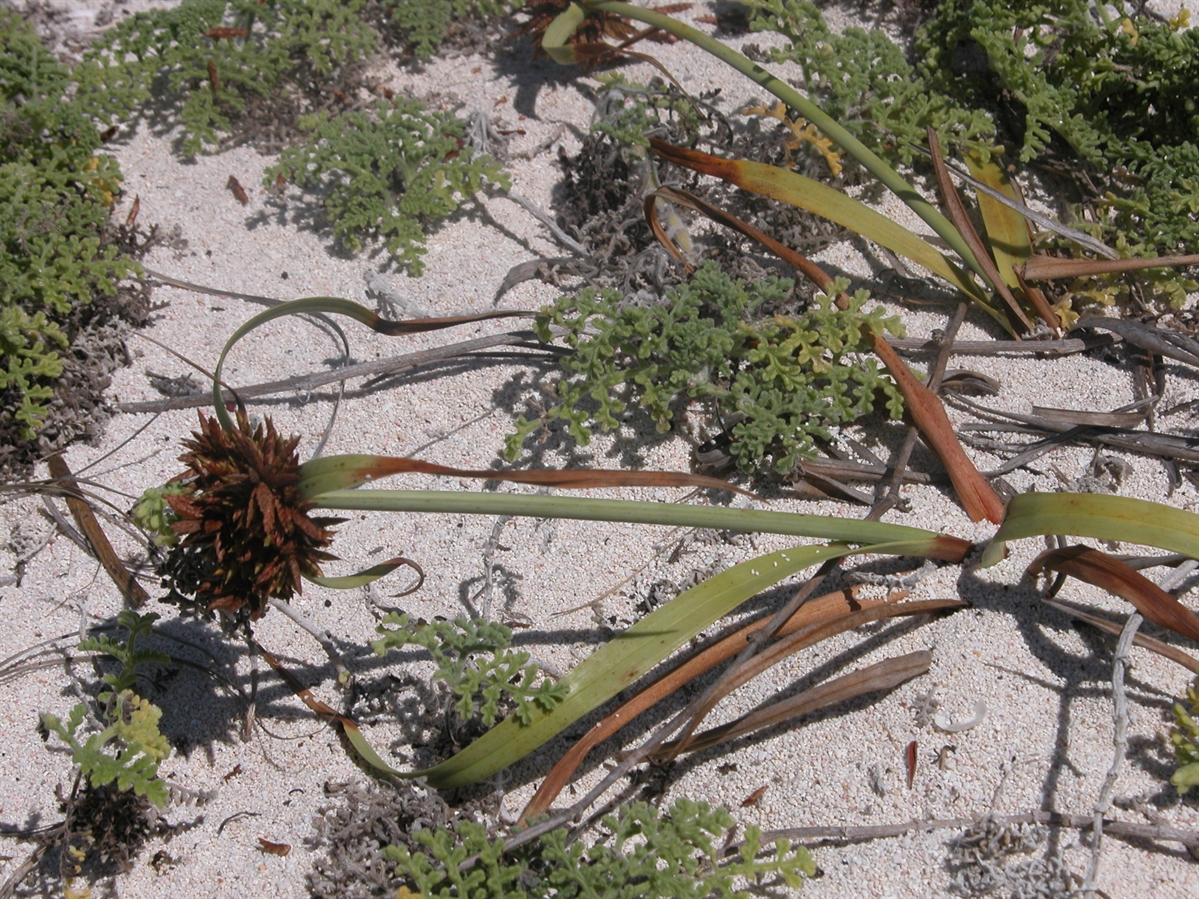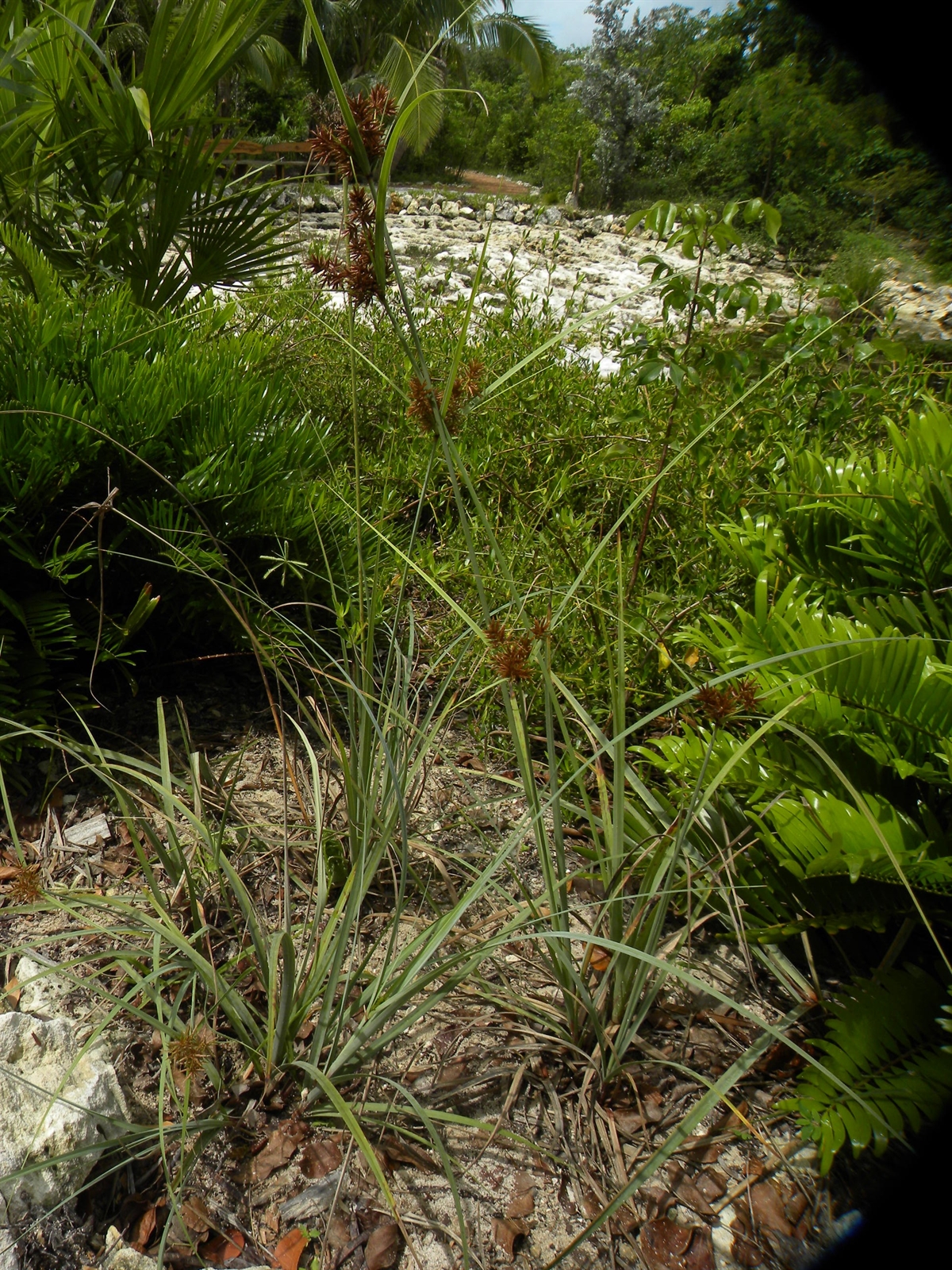Habit: Cyperus planifolius grows as a clumping perennial herb to 75 cm in height with a triangular stem. The leaves are arranged alternately, parallel veined, to 25 cm in length and 10 mm wide with an acuminate leaf apex and a scabrous margin. The leaf base may be a reddish brown and the abaxial surface grayish.
The incomplete, perfect flowers are arranged in a cluster of spikelets in an umbel like corymb. The reddish spikelets are at the end of a triangular shaped peduncle and are subtended by 3-5 leaf like bracts. The spikelets are brown at maturity. Each individual flower in the spikelet is subtended by a boat shaped bract. There is no calyx or corolla. There are 3 stamens. The ovary is superior with a single locule with a 3-lobed style. The fruit is a triangular achene at maturity.
Habitat: Cyperus planifolius grows in Dunes and sandy Human Altered environments (yards, old fields).
Distribution: Cyperus planifolius occurs throughout the Lucayan Archipelago, the Caribbean, Central America and northern South America, and parts of the southern United States.
Medicinal/Cultural/Economic usage: Cyperus planifolius is not known to be used medicinally in the Lucayan Archipelago.



